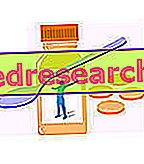
In addition to triggering adverse allergic reactions in predisposed individuals, some food colors are said to worsen attention deficit hyperactivity disorder in children.
Typical symptoms of this syndrome include: attention deficit, nervousness, anxiety, easy irritability, impulsiveness and aggression.
First of all it should be pointed out that the children's organism is not yet fully developed, so it is not able to ensure the same level of detoxifying action expressed by an adult organism against potential harmful substances.
Although there are still no reliable data, some artificial dyes appear to be involved in the worsening of hyperactivity in children. Some clinical studies have shown a clear association between the high intake of tartrazine (E102), carmoisine (E122), erythrosine (E127), bright blue (E133) and Brown FK ( E154 ) and the exacerbation of restless behaviors, with irritability and problems of insomnia; likewise, dietary exclusion regimes have proved useful in improving symptoms.
Although the evidence of these correlations is considered weak by the international scientific community, for precautionary purposes it would be desirable to eliminate as much as possible the use of food dyes from all foods intended for children, especially if they suffer from attention deficit syndrome and hyperactivity.



